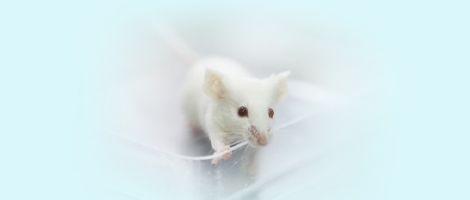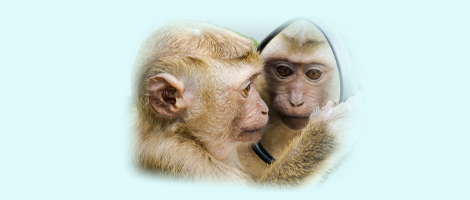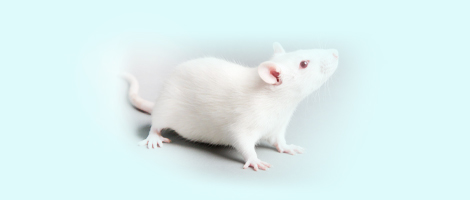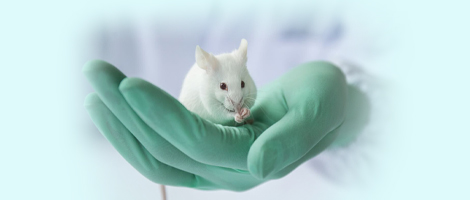| [1] |
WARBURTON D, EL-HASHASH A, CARRARO G, et al. Lung organogenesis[J]. Curr Top Dev Biol, 2010, 90:73-158. DOI:10.1016/s0070-2153(10)90003-3 .
|
| [2] |
SHI H J, ZHANG S J, LAI F P, et al. The establishment and severity assessment of ultrasound-guided prenatal broncho-pulmonary dysplasia model in rat[J]. Sci Rep, 2024, 14(1):18133. DOI:10.1038/s41598-024-69051-w .
|
| [3] |
PEERS DE NIEUWBURGH M, HUNT M, CHANDRASEKARAN P, et al. Chronic hypoxia in an Extrauterine Environment for Neonatal Development impairs lung development[J]. Am J Respir Cell Mol Biol, 2025, 72(4):441-452. DOI:10.1165/rcmb. 2024-0012OC .
|
| [4] |
QU W S, YIN J Y, WANG H M, et al. A simple method for the formalin fixation of lungs in toxicological pathology studies[J]. Exp Toxicol Pathol, 2015, 67(10):533-538. DOI:10.1016/j.etp.2015.08.002 .
|
| [5] |
马嘉昕, 王亚恒, 董伟, 等. 实验大小鼠心脏固定方法的优化[J]. 中国比较医学杂志, 2023, 33(2):84-90. DOI:10.3969/j.issn.1671-7856.2023.02.011 .
|
|
MA J X, WANG Y H, DONG W, et al. Optimization of cardiac fixation methods in experimental rats and mice[J]. Chin J Comp Med, 2023, 33(2):84-90. DOI:10.3969/j.issn.1671-7856.2023.02.011 .
|
| [6] |
石恒捷, 吕国荣, 赖芳萍, 等. 产前支气管肺发育不良胎鼠模型构建及其严重程度的超声评估[J]. 中国超声医学杂志, 2023, 39(9):1060-1063. DOI: 10.3969/j.issn.1002-0101.2023.09.033 .
|
|
SHI H J, LÜ G R, LAI F P, et al. Construction of fetal rat model of prenatal broncho-pulmonary dysplasia and ultrasono-graphic evaluation of its severity[J]. Chin J Ultrasound Med, 2023, 39(9):1060-1063. DOI: 10.3969/j.issn.1002-0101.2023.09.033 .
|
| [7] |
高瑕. 小鼠肺发育观察及地塞米松对胎鼠肺发育的影响[D]. 天津: 天津医科大学, 2021. DOI: 10.27366/d.cnki.gtyku.2021.001335 .
|
|
GAO X. Observation of lung development in mice and theeffect of dexamethasone on lung development in fetal mice[D]. Tianjin: Tianjin Medical University, 2021. DOI: 10.27366/d.cnki.gtyku.2021.001335 .
|
| [8] |
李文, 张思良, 王冬梅, 等. 小鼠开胸前气管内灌注肺制样方法体重依赖灌注量的探讨[J]. 科学技术与工程, 2018, 18(27):102-105. DOI: 10.3969/j.issn.1671-1815.2018.27.017 .
|
|
LI W, ZHANG S L, WANG D M, et al. Discuss on the weight-dependent perfusion volume of mice in the preparation of lung samples by intratracheal infusion before opening the chest[J]. Sci Technol Eng, 2018, 18(27):102-105. DOI: 10.3969/j.issn.1671-1815.2018.27.017 .
|
| [9] |
尚宏伟, 王兴翠, 曾晓蓓, 等. 一种大鼠肺组织固定方法的新尝试[J]. 中国组织化学与细胞化学杂志, 1999, 8(1): 60, 69. DOI: 10.16705/j.cnki.1004-1850.1999.01.015 .
|
|
SHANG H W, WANG X C, ZENG X B, et al. A new attempt of lung tissue fixation in rats[J]. Chin J Histochem Cytochem, 1999, 8(1): 60, 69. DOI: 10.16705/j.cnki.1004-1850.1999.01.015 .
|
| [10] |
STACEY M T, JOSEPH B, WILLIAM J J, et al. Air-inflation of murine lungs with vascular perfusion-fixation[J]. J Vis Exp, 2021 (168):10.3791/62215. DOI: 10.3791/62215 .
|
| [11] |
MARK R W. The hematoxylin and eosin stain in anatomic pathology-An often-neglected focus of quality assurance in the laboratory[J]. Semin Diagn Pathol, 2019, 36(5):303-311. DOI: 10.1053/j.semdp.2019.06.003 .
|
| [12] |
张金月, 惠敏, 道力给艳, 等. 医学实验动物采血方式及检前因素对生化指标的影响[J]. 医学理论与实践, 2024, 37(9):1480-1483. DOI: 10.19381/j.issn.1001-7585.2024.09.011 .
|
|
ZHANG J Y, HUI M, DAO L G Y, et al. Effects of blood collection methods and pre-examination factors on biochemical indexes in medical experimental animals[J]. J Med Theory Pract, 2024, 37(9):1480-1483. DOI: 10.19381/j.issn.1001-7585.2024.09.011 .
|
| [13] |
LEARY S, UNDERWOOD W, ANTHONY R, et al. AVMA Guidelines for the euthanasia of animals: 2020 Edition[M]. Schaumburg: American Veterinary Medical Association, 2020.
|
| [14] |
尚宏伟, 李宝红, 王兴翠, 等. 大鼠肺组织制片方法的改进[J]. 首都医科大学学报, 1999, 20(2): 127-128. DOI: 10.3969/j.issn.1006-7795.1999.02.018 .
|
|
SHANG H W, LI B H, WANG X C, et al. Improvement of the method of making slices of rat lung tissue[J]. J Cap Med Univ, 1999, 20(2): 127-128. DOI: 10.3969/j.issn.1006-7795.1999.02.018 .
|
| [15] |
MATT U, HEROLD S. Traffic jam in lung capillaries: inter-organ communication impedes gas exchange after acute kidney injury[J]. J Clin Invest, 2025, 135(10): e192917. DOI:10.1172/JCI192917 .
|
| [16] |
DHANYA M, NICOLA P S. Lung development[J]. Semin Pediatr Surg, 2015,24(4):152-155. DOI: 10.1053/j.sempe dsurg. 2015.01.011 .
|
| [17] |
MICHELE G, CHIARA G, WILLIAM W S, et al. Current definitions of the breathing cycle in alveolar breath-by-breath gas exchange analysis[J]. Am J Physiol Regul Integr Comp Physiol, 2023, 325(5):R433-R445. DOI: 10.1152/ajpregu. 00065. 2023 .
|
| [18] |
KUPPEVELT T H, ROBBSESOM A A, VERSTEEG E M, et al. Restoration by vacuum inflation of original alveolar dimen-sions in small human lung specimens[J]. Eur Respir J, 2000, 15(4):771-777. DOI: 10.1034/j.1399-3003.2000.15d23.x .
|
| [19] |
苏杭, 嵇波, 赵国桢, 等. 电针"足三里"或"阳陵泉"对围产期尼古丁暴露新生鼠肺功能和组织形态的影响[J]. 中国针灸, 2019, 39 (6): 632-636. DOI: 10.13703/j.0255-2930.2019.06.017 .
|
|
SU H, JI B, ZHAO G Z, et al. Effect of electroacupuncture at "Zusanli" (ST 36) and "Yanglingquan" (GB 34) on perinatal nicotine-exposure-induced lung function and morphology of neonatal rats[J]. Zhongguo Zhen Jiu, 2019, 39(6): 632-636. DOI: 10.13703/j.0255-2930.2019.06.017 .
|
| [20] |
郝莉霞, 卢蓉, 马霞霞, 等. 香叶木素对胎粪诱导的新生大鼠急性肺损伤的作用及其机制探讨[J]. 实验动物与比较医学, 2020, 40 (5): 384-390. DOI: 1674-5817(2020)05-0384-07 .
|
|
HAO L X, LU R, MA X X, et al. Effect of diosmetin on acute lung injury induced by meconium and its mechanism in neonatal rats[J]. Lab Anim Comp Med, 2020, 40(5): 384-390. DOI: 1674-5817(2020)05-0384-07 .
|
| [21] |
BRABER S, VERHEIJDEN K T, HENRICKS P J, et al. A comparison of fixation methods on lung morphology in a murine model of emphysema[J]. Am J Physiol Lung Cell Mol Physiol, 2010, 299(6): L843-L851. DOI:10.1152/ajplung.00192. 2010 .
|







 )
)